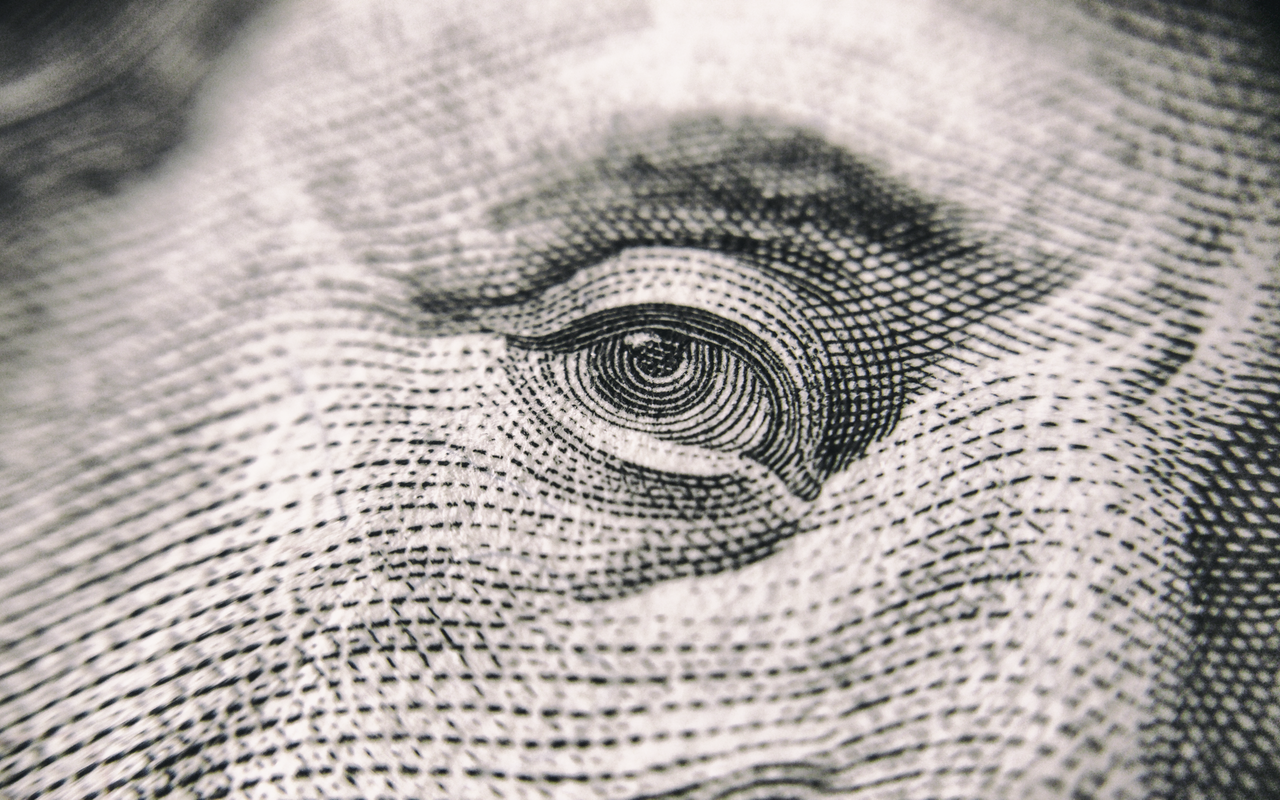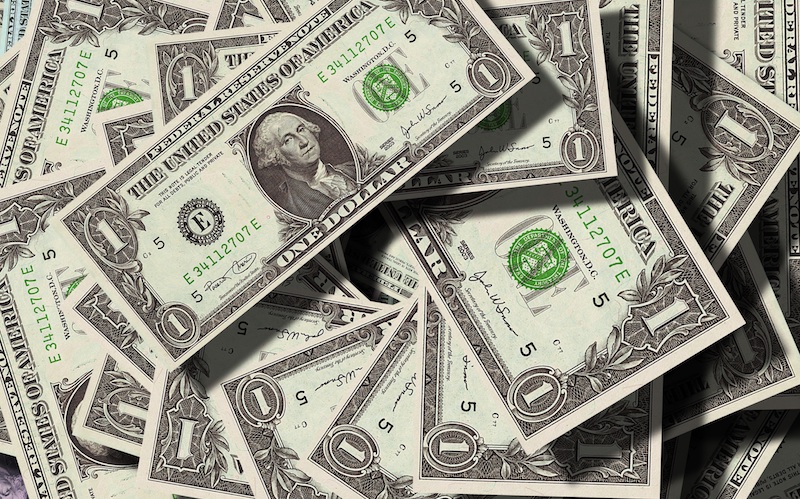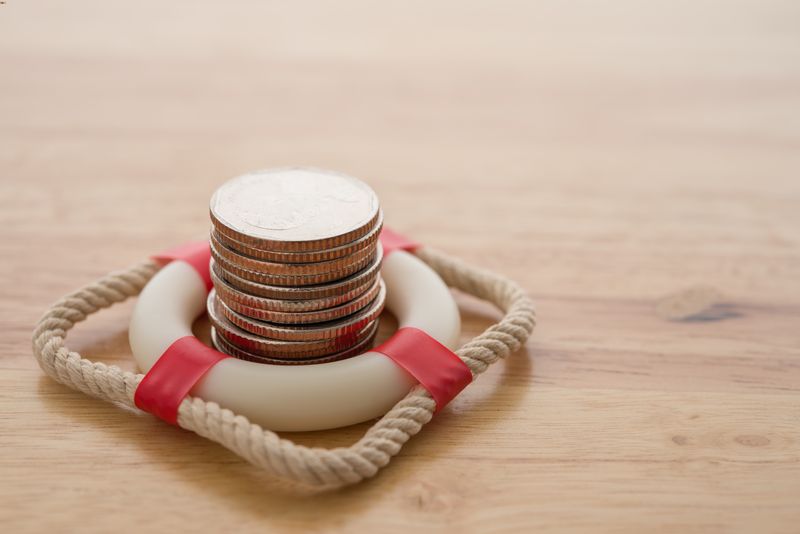You don't need to save 100% of your total desired emergency fund before investing for the long-term (like retirement savings).
But you do need to first save enough so you're not "one small bit of bad luck" away from credit card debt, prior to saving for long-term goals (like retirement).
Ask yourself, "assuming nothing bad happened, what amount of 'cushion' do I need to keep me from being short cash in my account or turning to credit cards?"
That's the initial goal for your FDIC-insured bank account emergency fund.
The Awesomeness of a Roth IRA
Next, if you are income-eligible for a Roth IRA, you're in luck. Why? Because Roth IRAs allow you to take back your contributions any time without penalty or tax.
Important distinction: Traditional IRAs do not let you do this - you'll pay tax and penalties.
Check out our AboveBoard Financial Action Plan to learn what IRAs you might be eligible for.
I'm a fan of using the Roth IRA as part of your emergency fund while you're working your way towards having your "core" emergency fund saved up.
During this time when you're working your way up from no emergency fund, make sure it's invested in cash or something cash-like (e.g. a money market fund).
The reason to start getting money into your Roth IRA ASAP is you can only contribute up to an annual maximum each year (currently $5,500 for under age 50, $6,500 for 50+). And the long-term tax benefits of a Roth IRA are awesome. So you want to take advantage of those yearly "windows of opportunity" as often as you can.
What You Can Do to Build A Solid Emergency Fund and Get on Track for Retirement
Here's how this would actually work: imagine you feel a $1,000 cushion in your bank account is the number that keeps you away from credit card debt rearing its ugly head. Your target emergency fund to cover a realistic downside scenario is $10,000 (this includes the $1,000). Beyond that, you'd feel really good if you had a total of $15,000 in emergency resources, because that would cover your "when it rains, it pours" scenarios.
You should, in your first year:
1) Save $1,000 in an FDIC-insured bank account (good to have this cash in your bank account to absorb spending volatility)
2) Save as much as you can in a Roth IRA, up to the limit ($5,500 age <50, $6,500 50+) - keep it in cash or a money market investment
3) If you are able to save more, put it in the bank account from #1 (also, nice work!)
When Jan 1 rings in the new year, your Roth IRA capacity is renewed - awesome!
4) Take any money you saved in Step #3 above, put it in the Roth IRA (again, be mindful of the limit)
5) If Step #4 didn't max out your Roth IRA contribution, keep going until you hit it!
6) Same step as #3 above...the cycle repeats.
You'll reach a point where you should start investing some of the Roth IRA in a way that's more appropriate for retirement savings, not an emergency fund.
Where is that point? It's a little different for each person, but I like to break emergency fund into 2 parts:
1) Core emergency fund: should be big enough to handle both a "not hard to imagine" downside scenario
In our example above, this is the $10,000.
2) Extended emergency fund: should be big enough to handle a "wow, when it rains it pours" downside scenario.
In our example above, this is the $15,000 (this includes the $10,000 core emergency fund)
I'd say that once you get to your "Core emergency fund" amount, you can start investing the difference in a way that's more appropriate for retirement savings.
So in our example, once you save the full $10,000 ($1,000 in a bank account + $9,000 in your Roth IRA).
Now that you're putting your money in higher risk / higher return investments, you need to "haircut" that money when thinking about how much you would have in an emergency.
We go into detail on haircutting in a separate post, but here's the basic idea, continuing our example.
Example, with "haircutting": You now have your $10,000 core emergency fund ($1,000 in a bank account + $9,000 in your Roth IRA & sitting in cash or a money market fund) - woohoo!
Your next $1,000 contributed to the Roth IRA could be invested in an appropriate target date retirement fund. If you're in your 20s-40s, that investment will be mostly equities.
So now you can't count that $1,000 as $1,000 of emergency resources...because it could be worth less when you need it for an emergency.
Here's where the haircut comes in. I suggest a haircut of 50% because that's what happened during the financial crisis. Haircut of 50% means you can only "count" 100% - 50% = 50%
So now you can think of your emergency resources as:
1) $1,000 bank account
2) $9,000 in Roth IRA, in cash or money market
3) "$500" in Roth IRA, in target date retirement (it's really $1,000, but only 50% counts for your emergency fund)
Even if you cannot save more than the annual Roth IRA contribution limit, your savings will eventually look like this...
...Now you have your "$15,000" of emergency resources:
1) $1,000 bank account
2) $9,000 in Roth IRA, in cash or money market
3) "$5,000" in Roth IRA, in target date retirement (it's really $10,000, but only 50% counts for your emergency fund)
As you save more in your Roth IRA, you can start taking more risk with that $9,000 you've been holding in cash or money market.
Say you contribute another $4,000 to your Roth IRA. You put that new contribution in the target date fund.
You can also take some of the $9,000 cash and invest it in the target date fund, so your emergency resources look like this...
...Still $15,000 in emergency resources, but you're growing your savings and moving your retirement strategy towards an asset allocation that is appropriate for a multi-decade time horizon:
1) $1,000 bank account
2) $5,000 in Roth IRA, in cash or money market
3) "$9,000" in Roth IRA, in target date retirement (it's really $18,000, but only 50% counts for your emergency fund)
See how we're increasing your risk as you build the assets to handle it?
In this context, increasing your risk is a good thing because we're assuming you're a person in your 20's - 40's who's saving for retirement. A money market fund will not get you there long-term, but it can be a fine place to park your assets while you're building your emergency fund.
Wondering how big your emergency fund should be? Check out How Big Should My Emergency Fund Be?
Interested to learn more about managing your financial priorities?
Check out our interactive AboveBoard Financial Action Plan!



